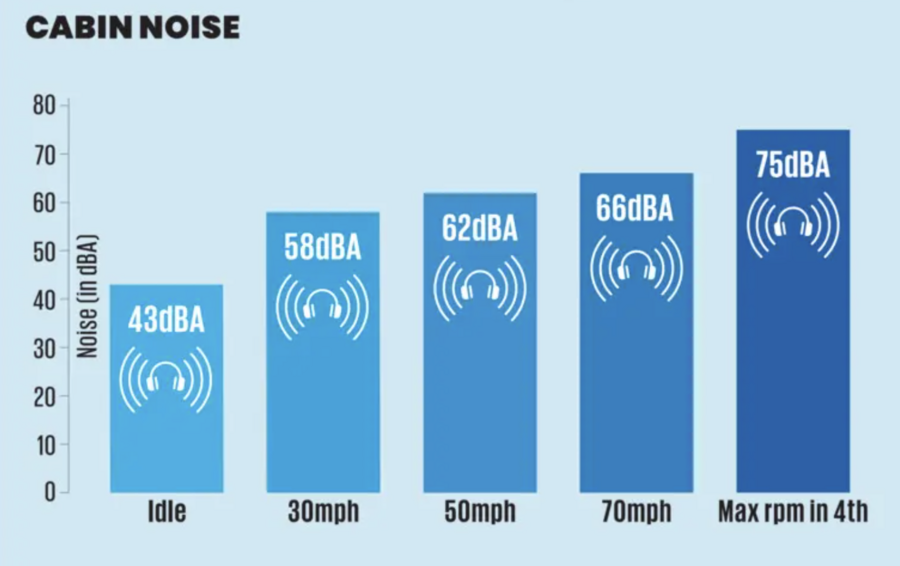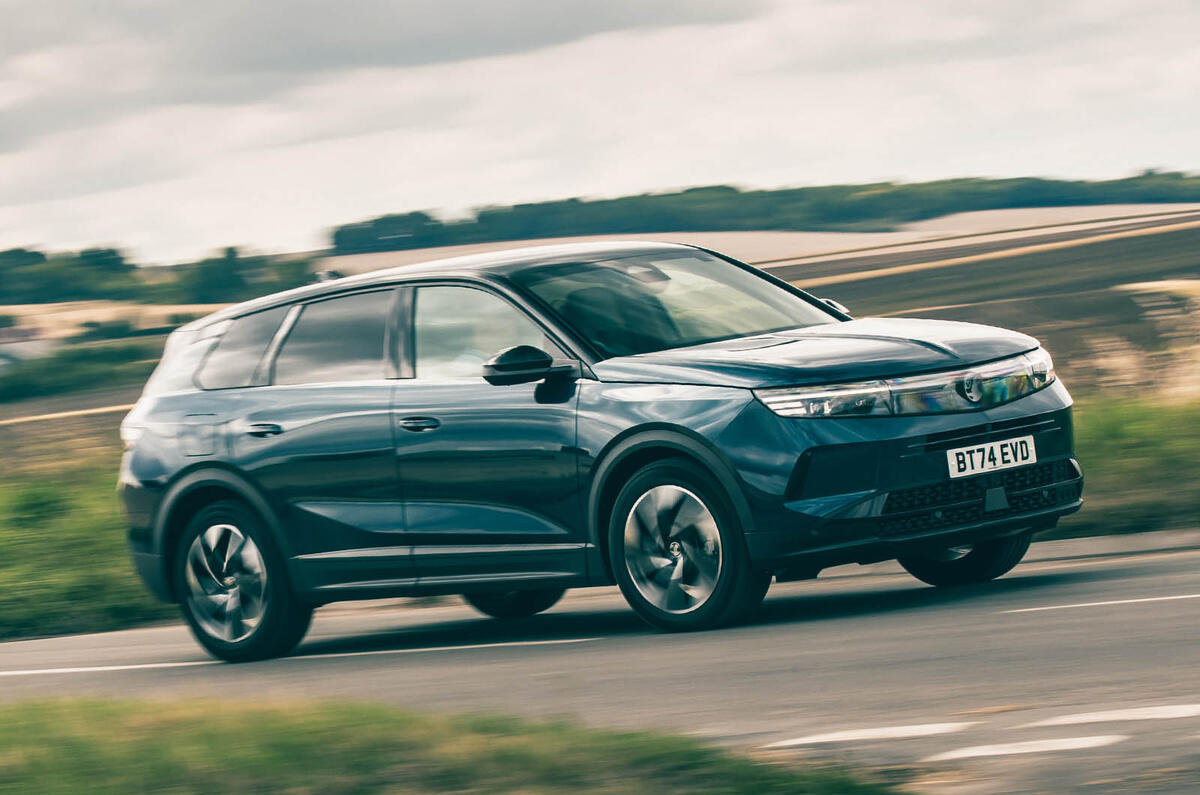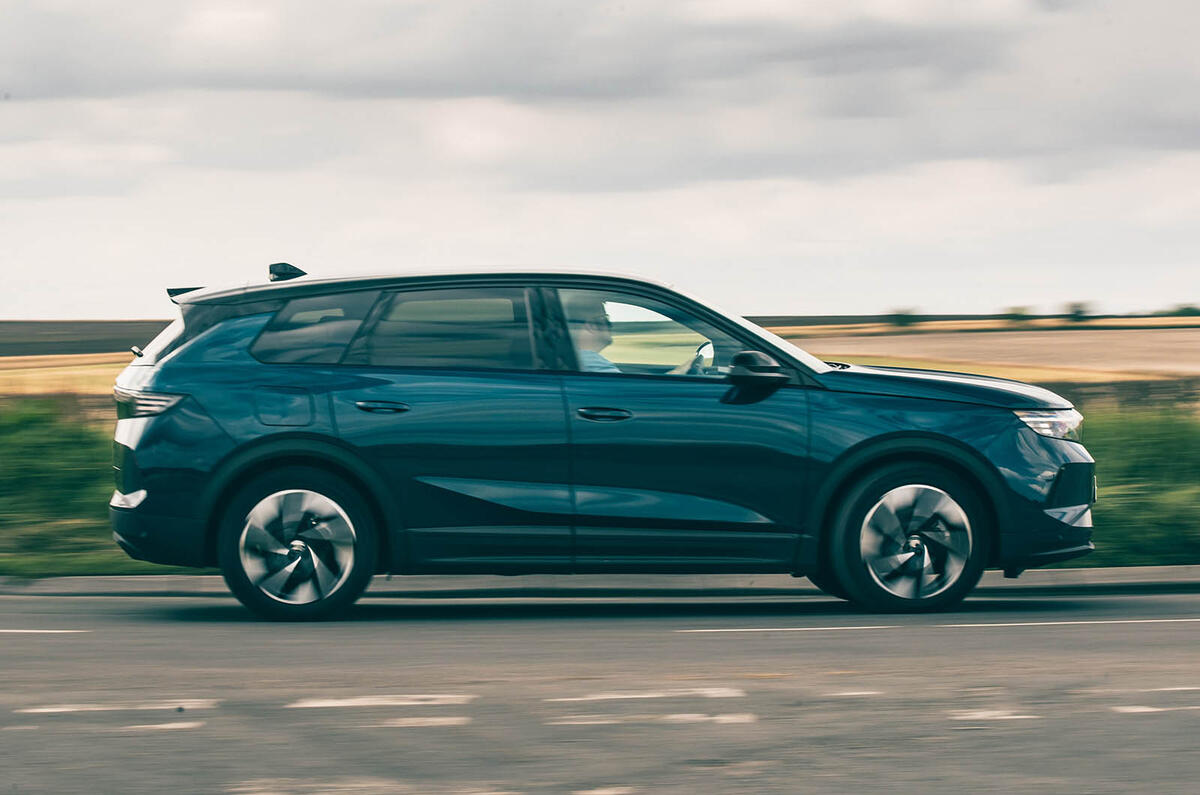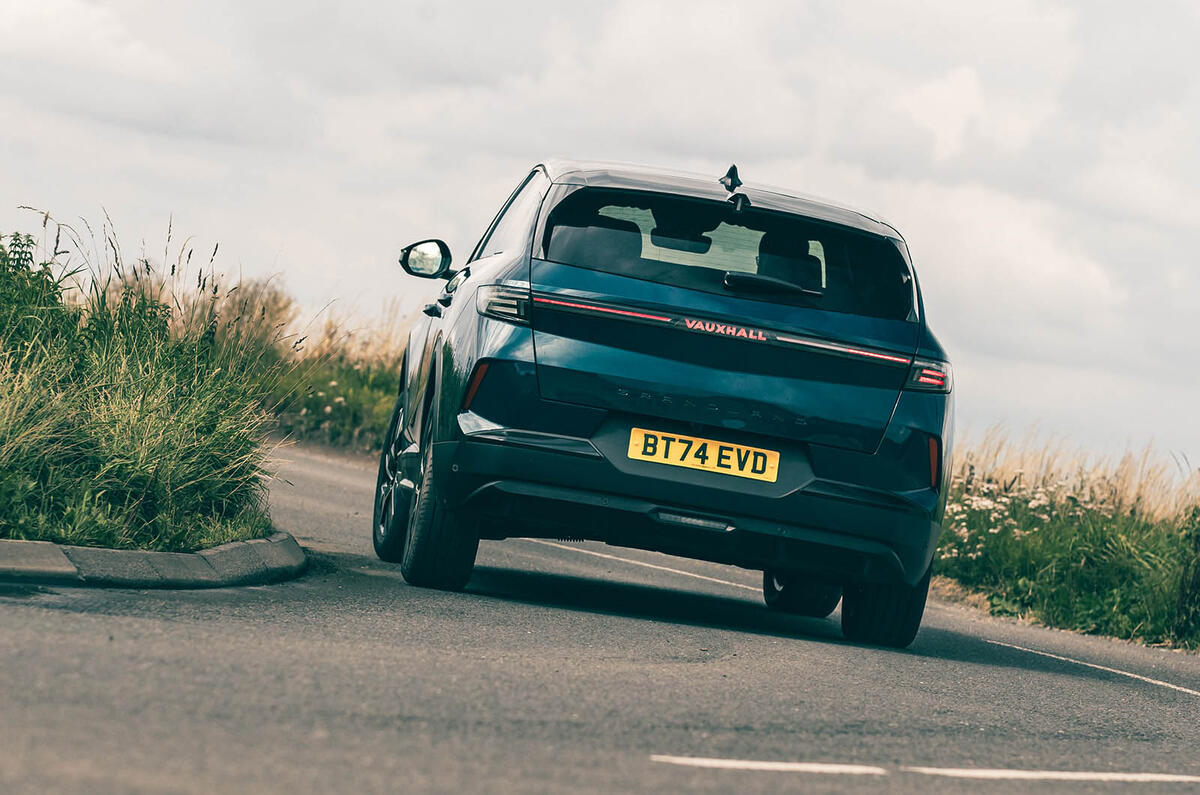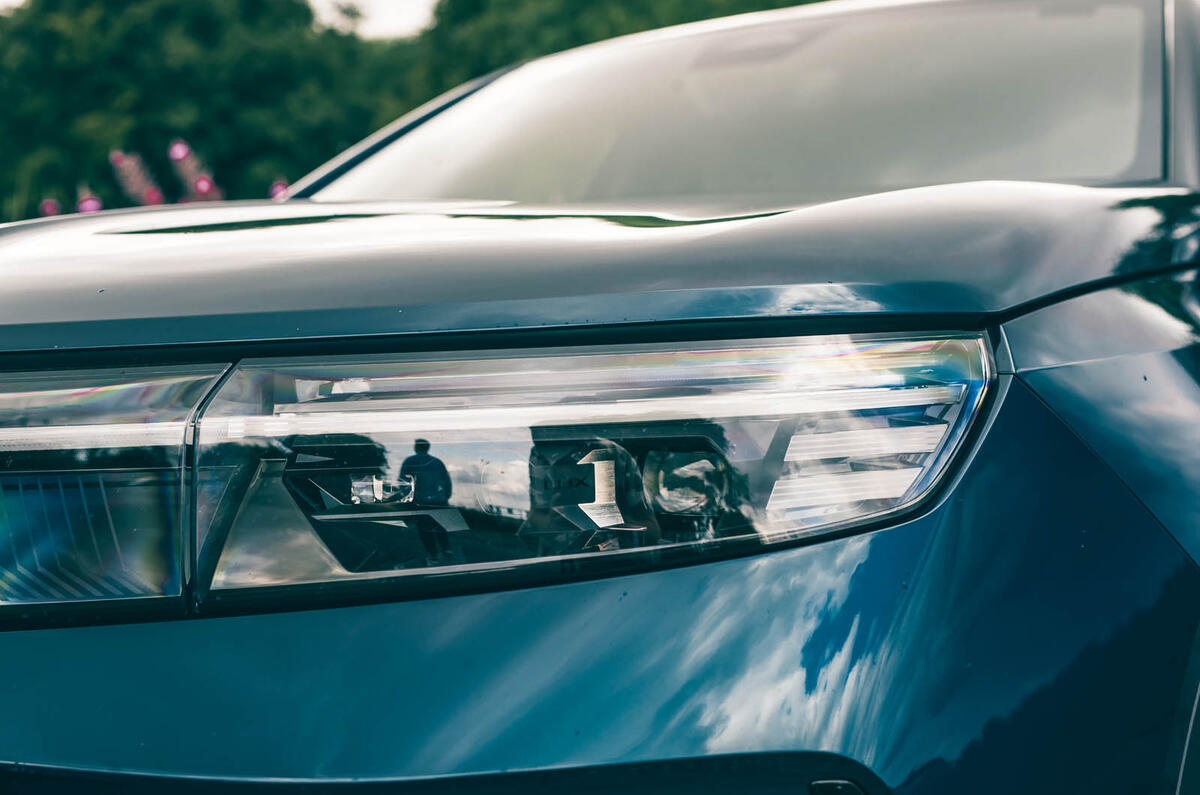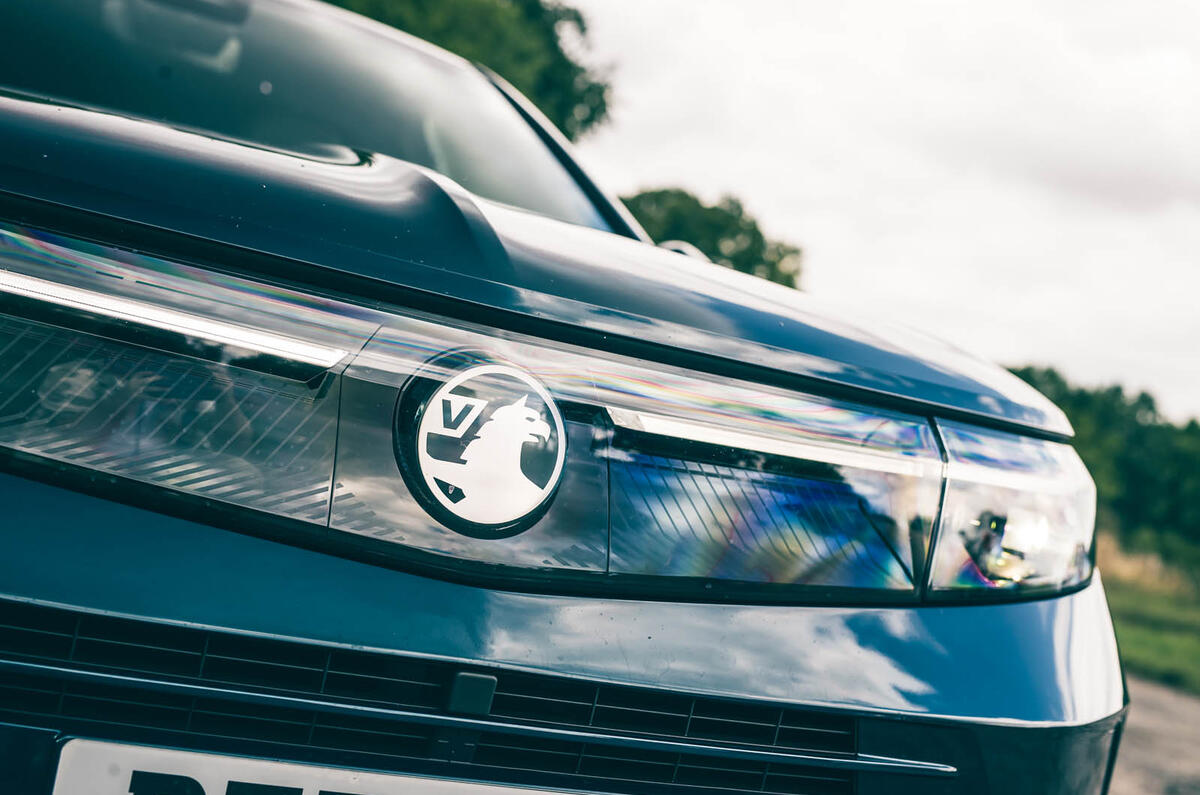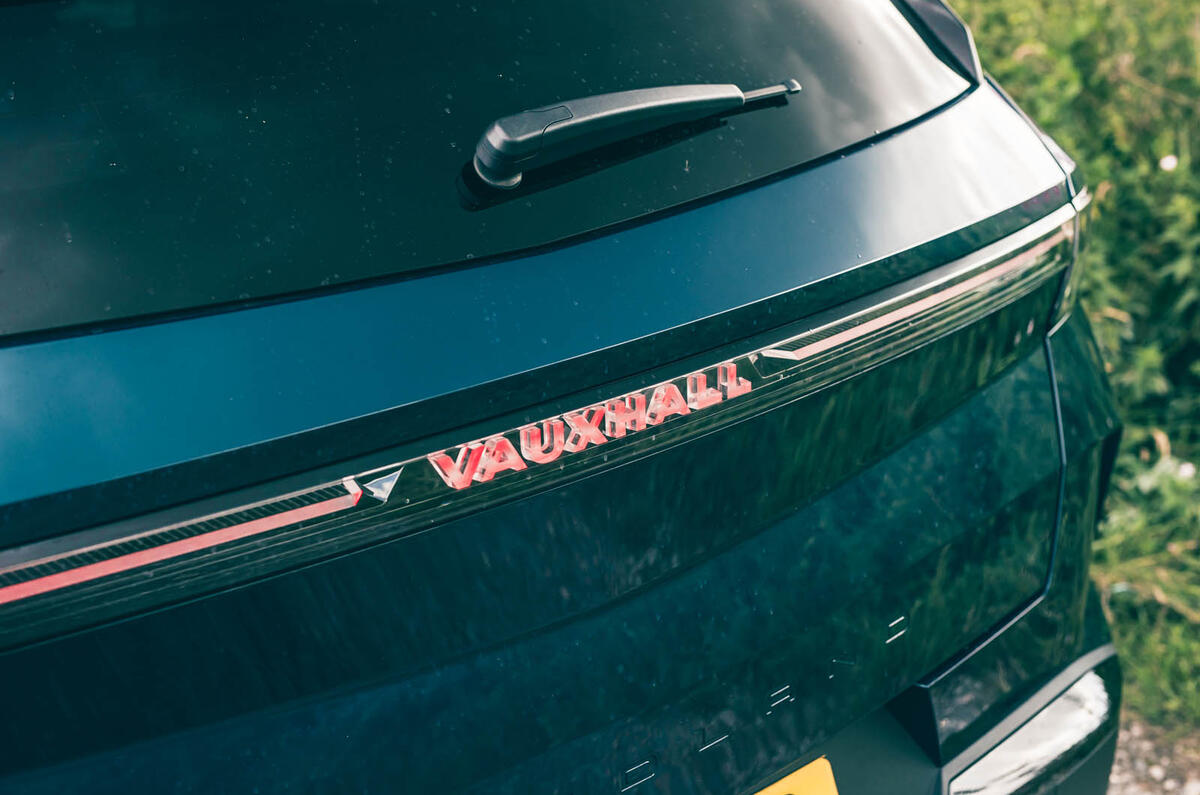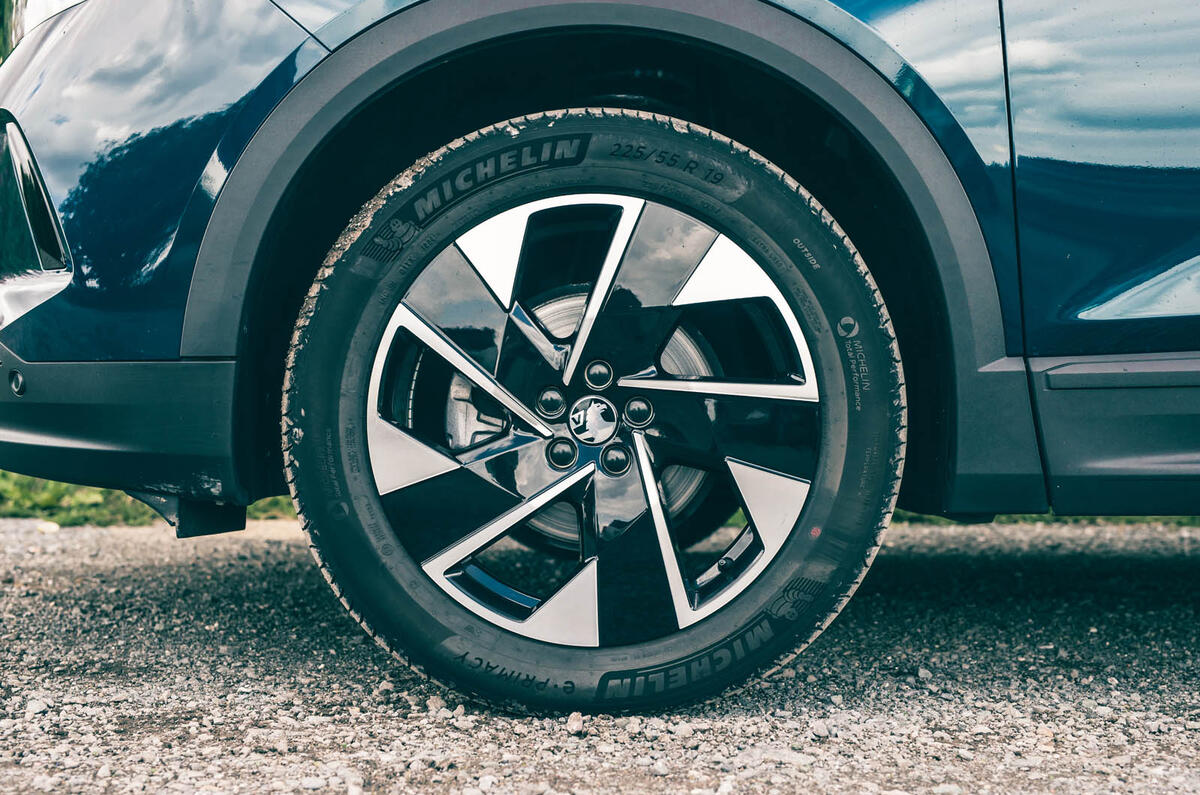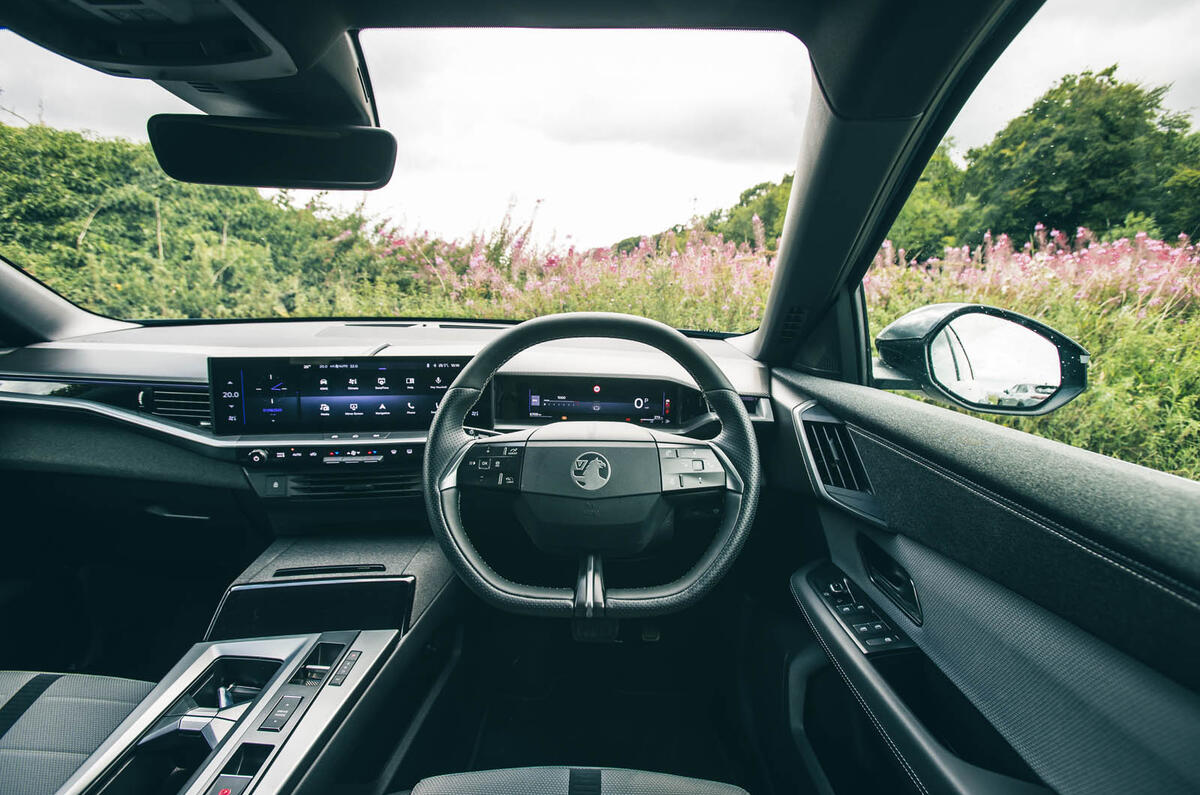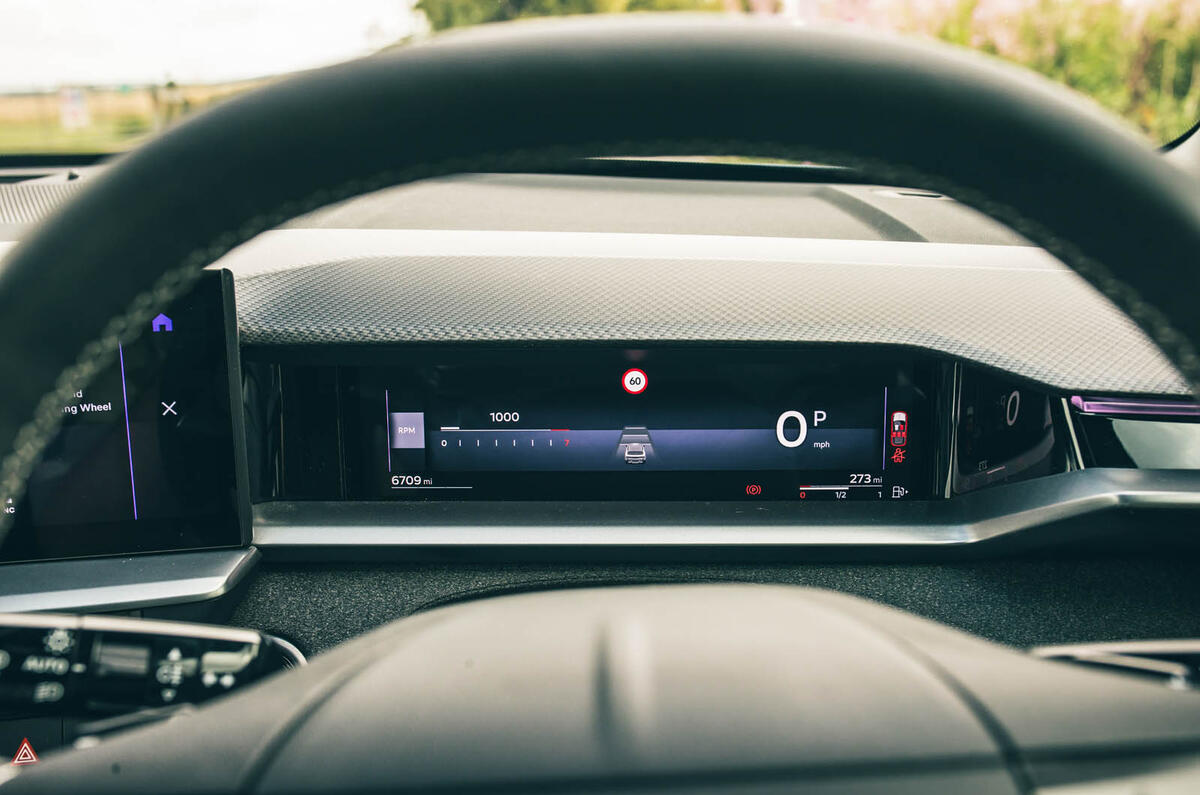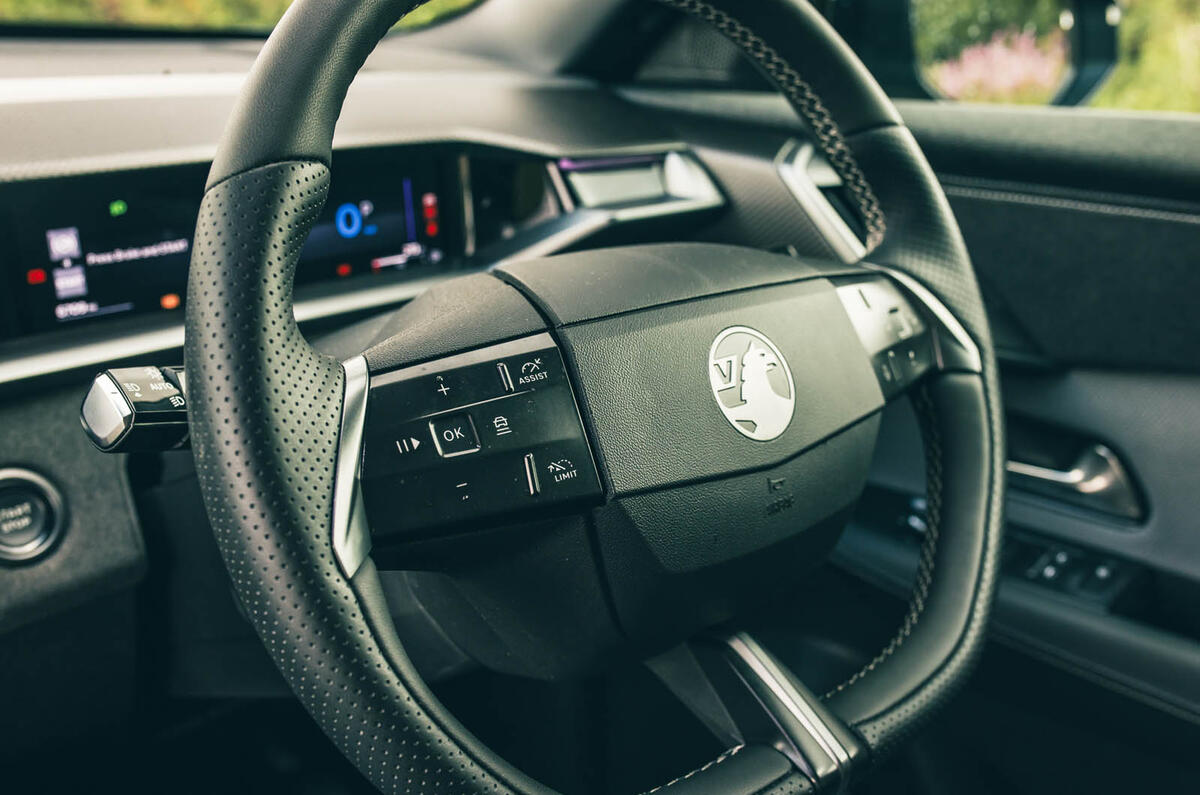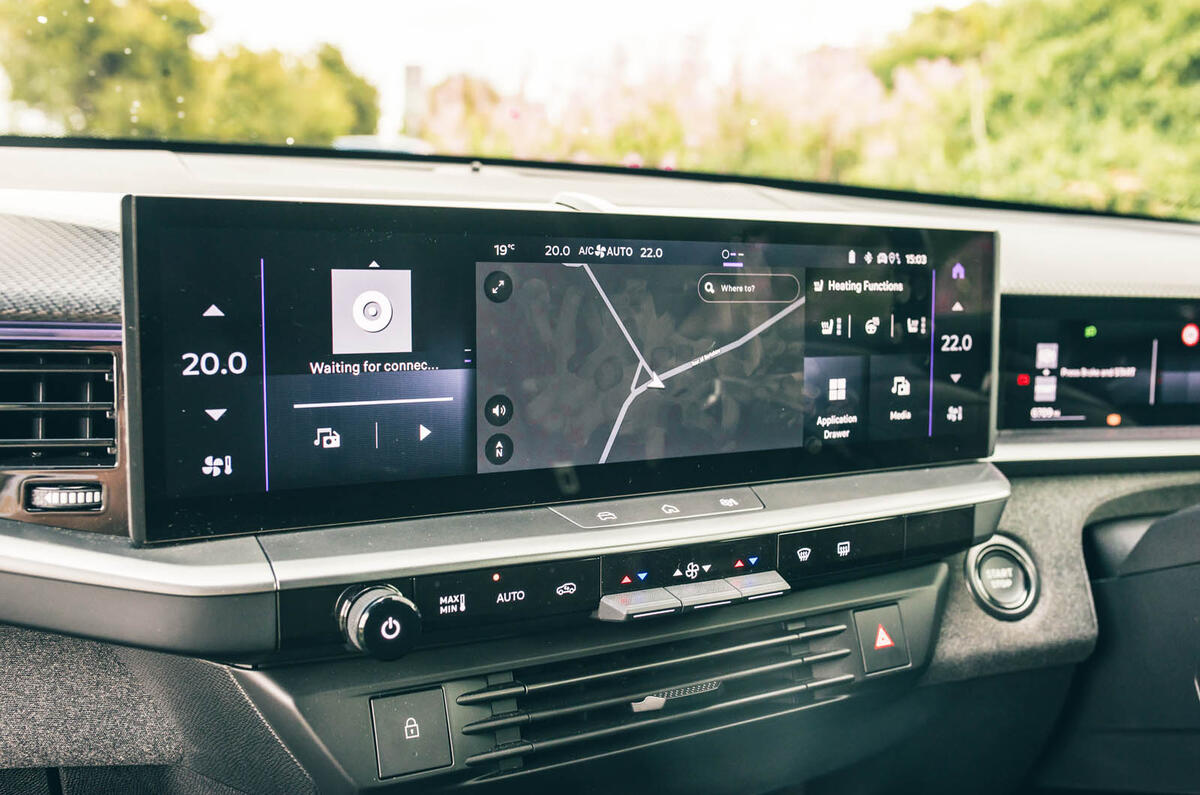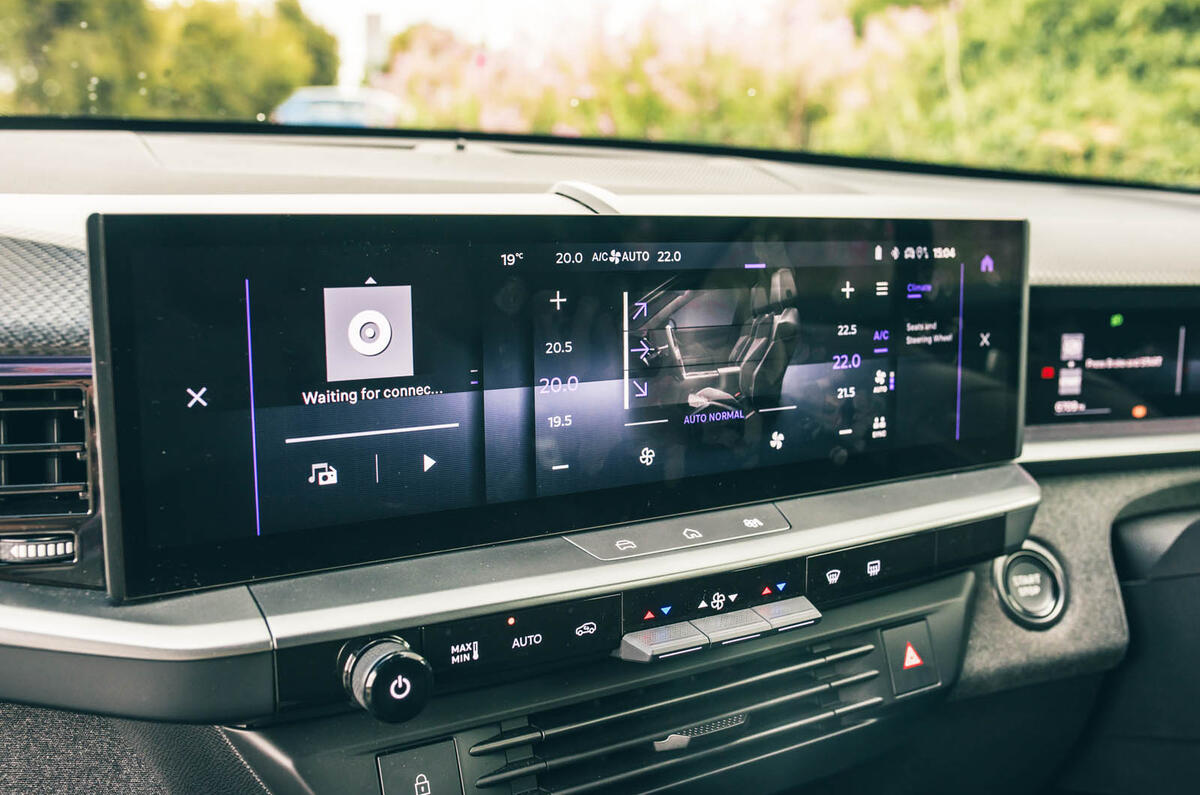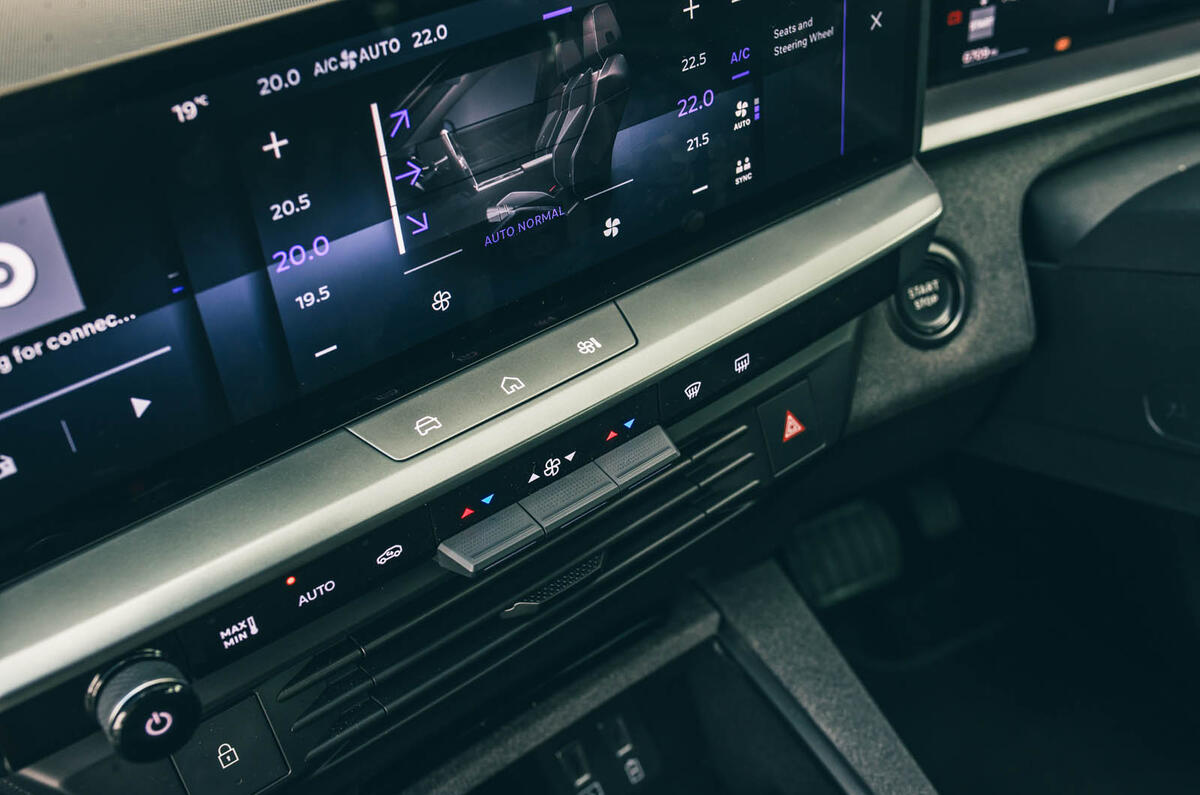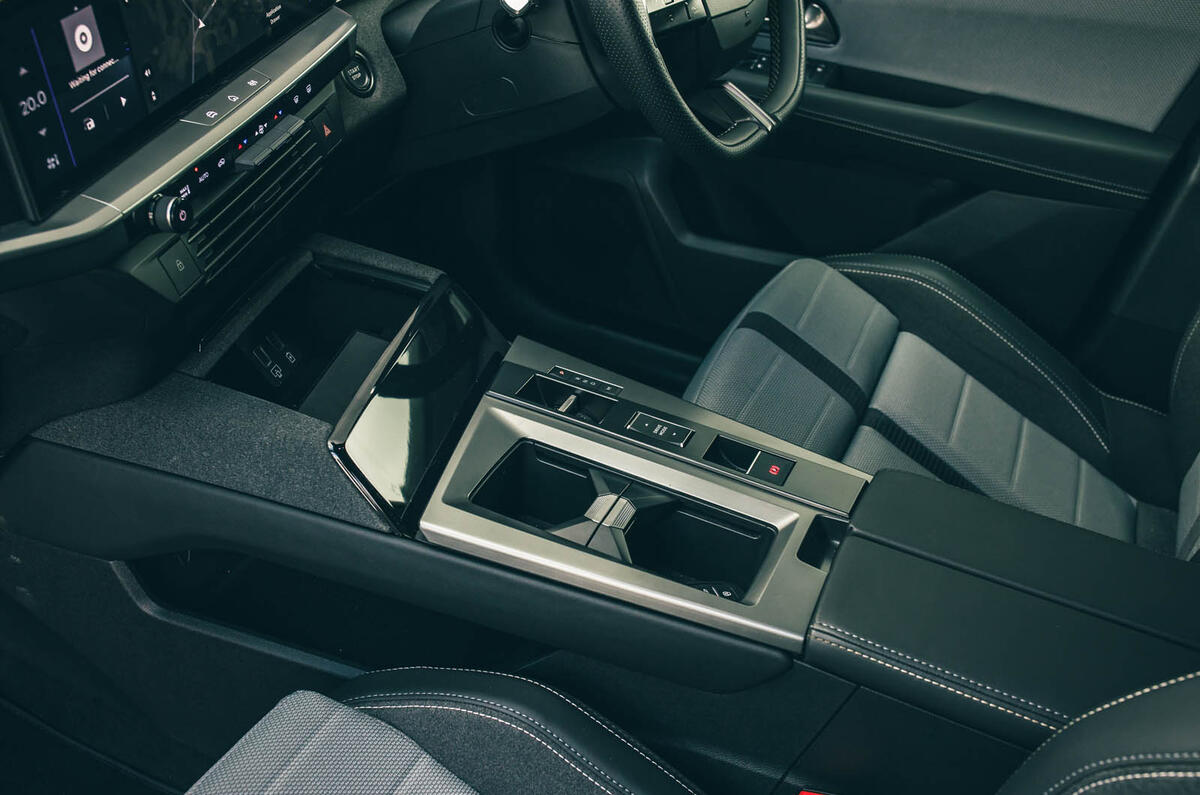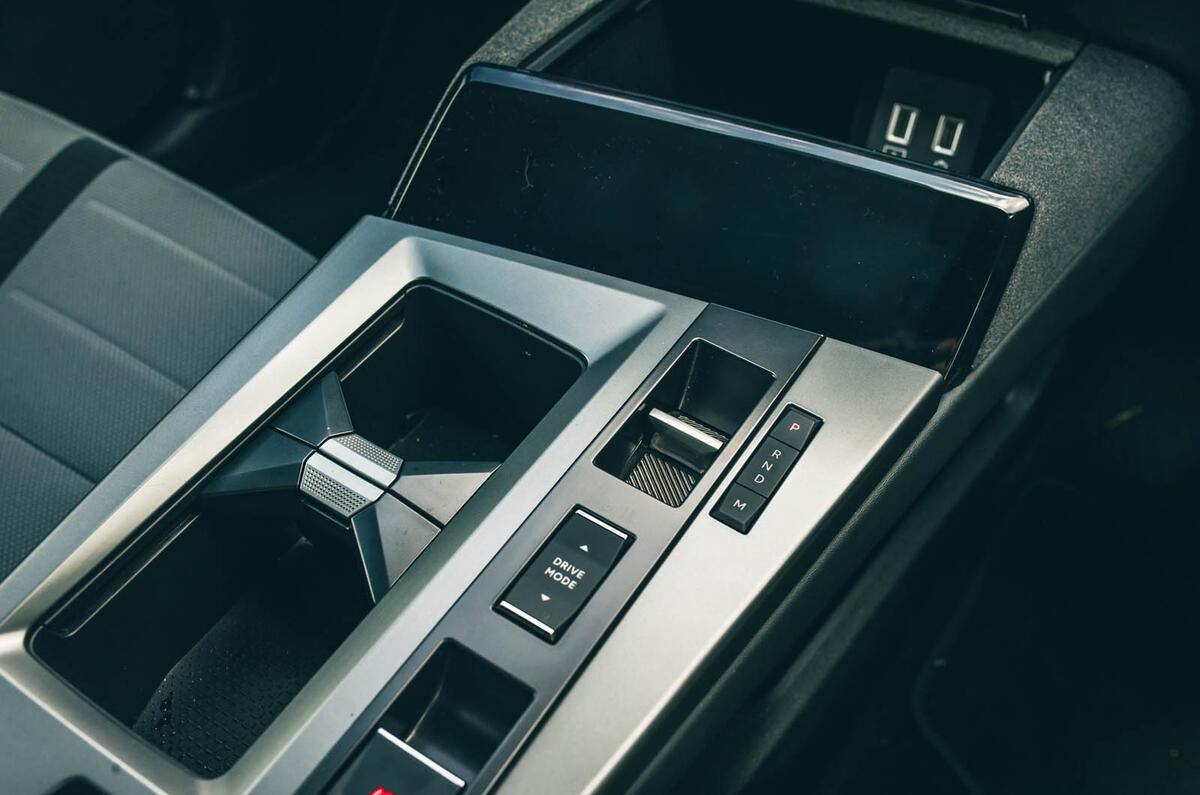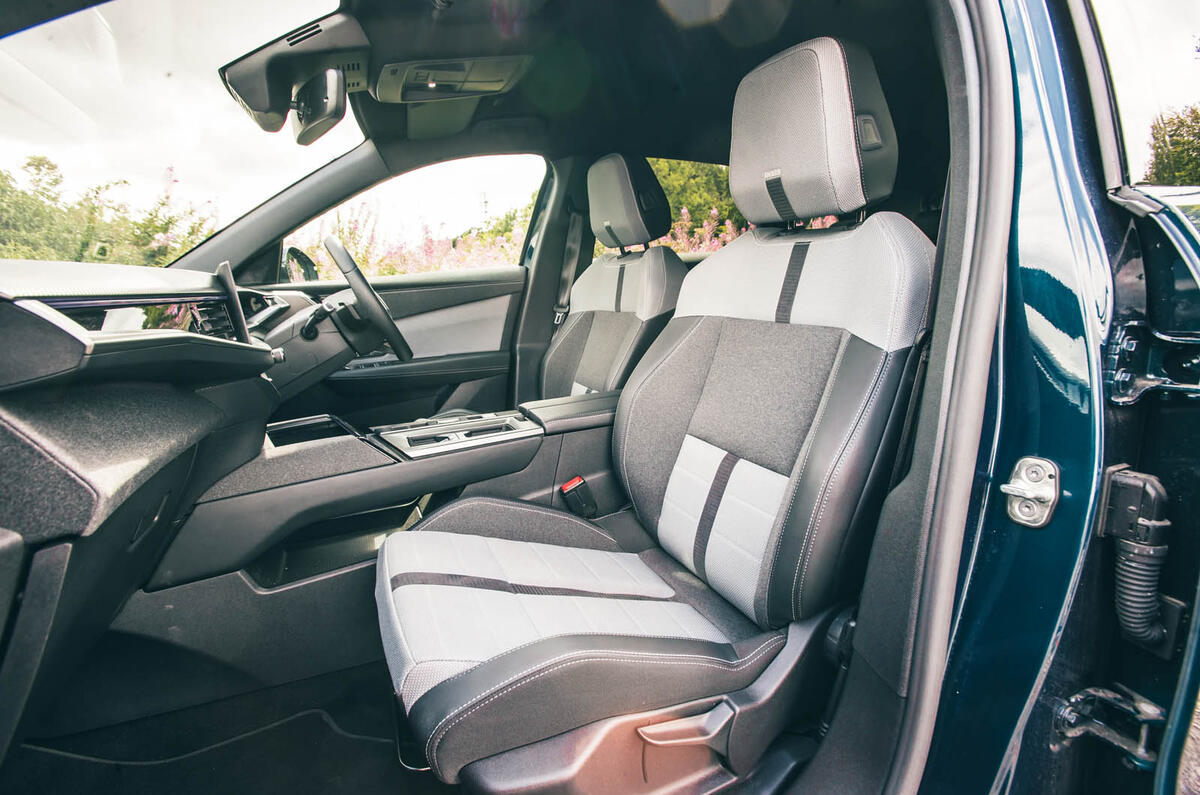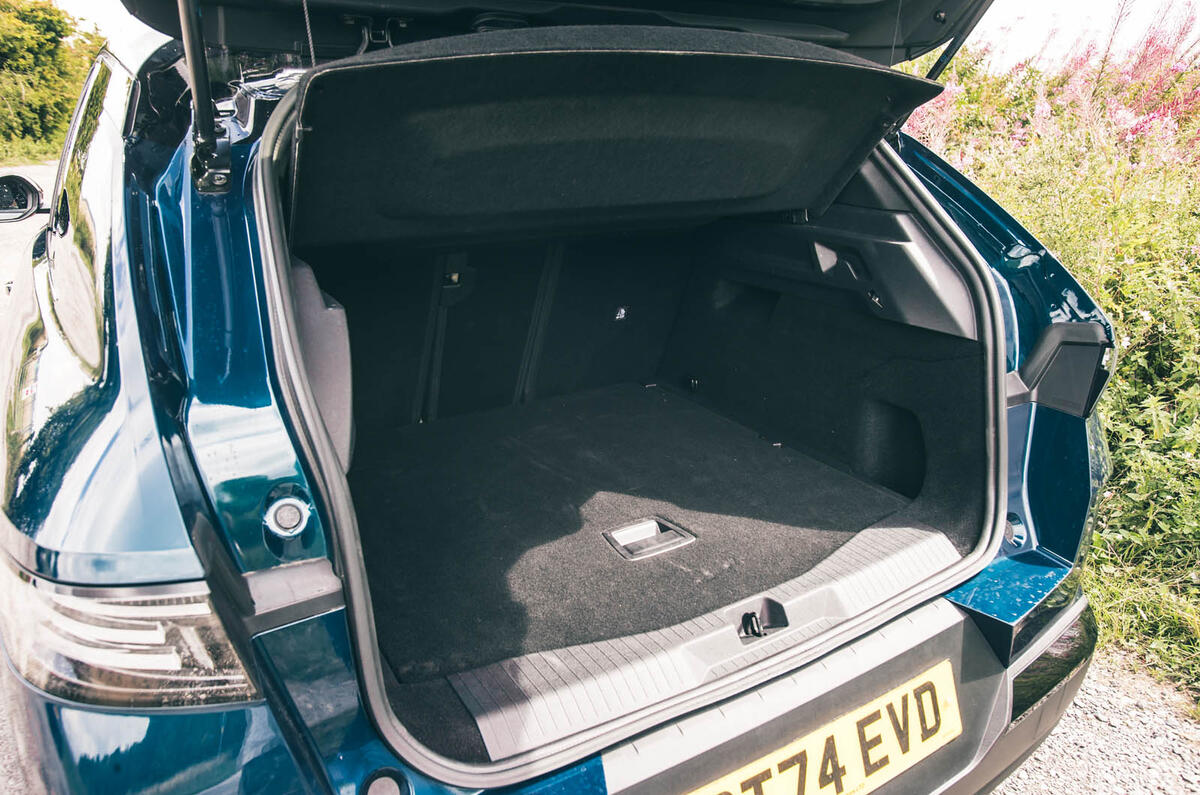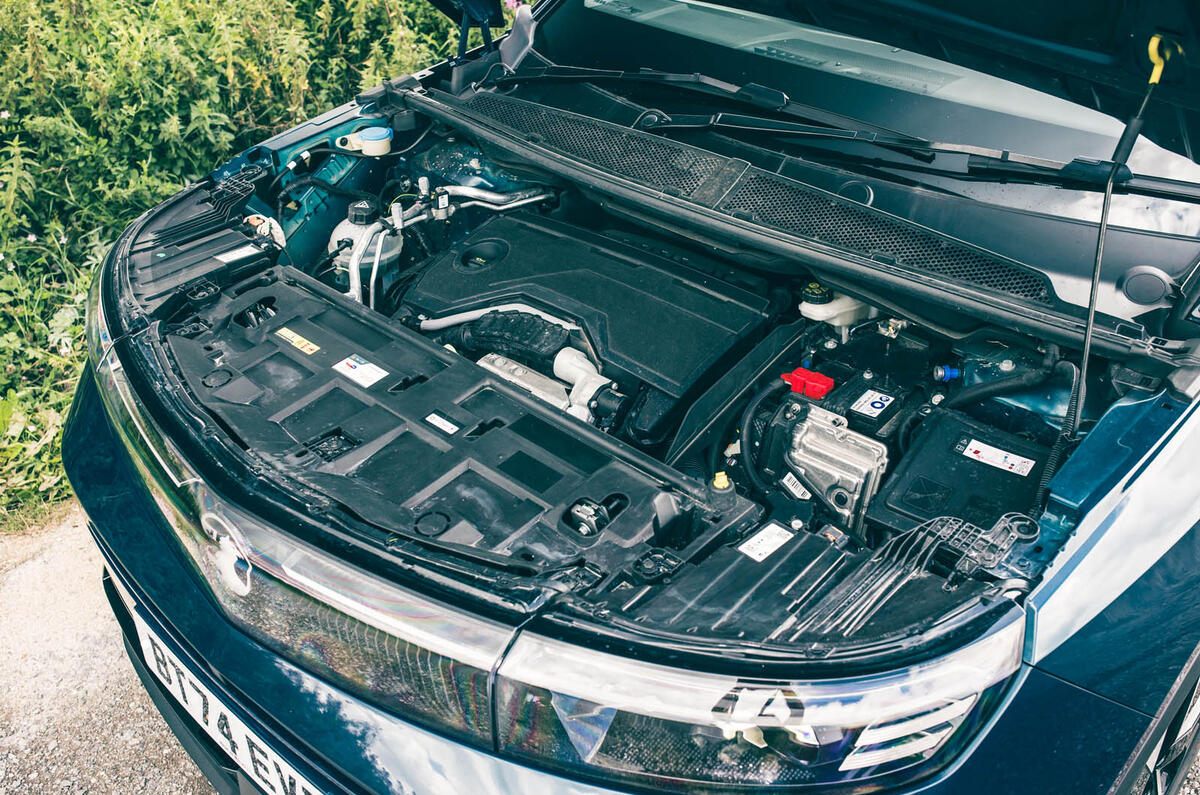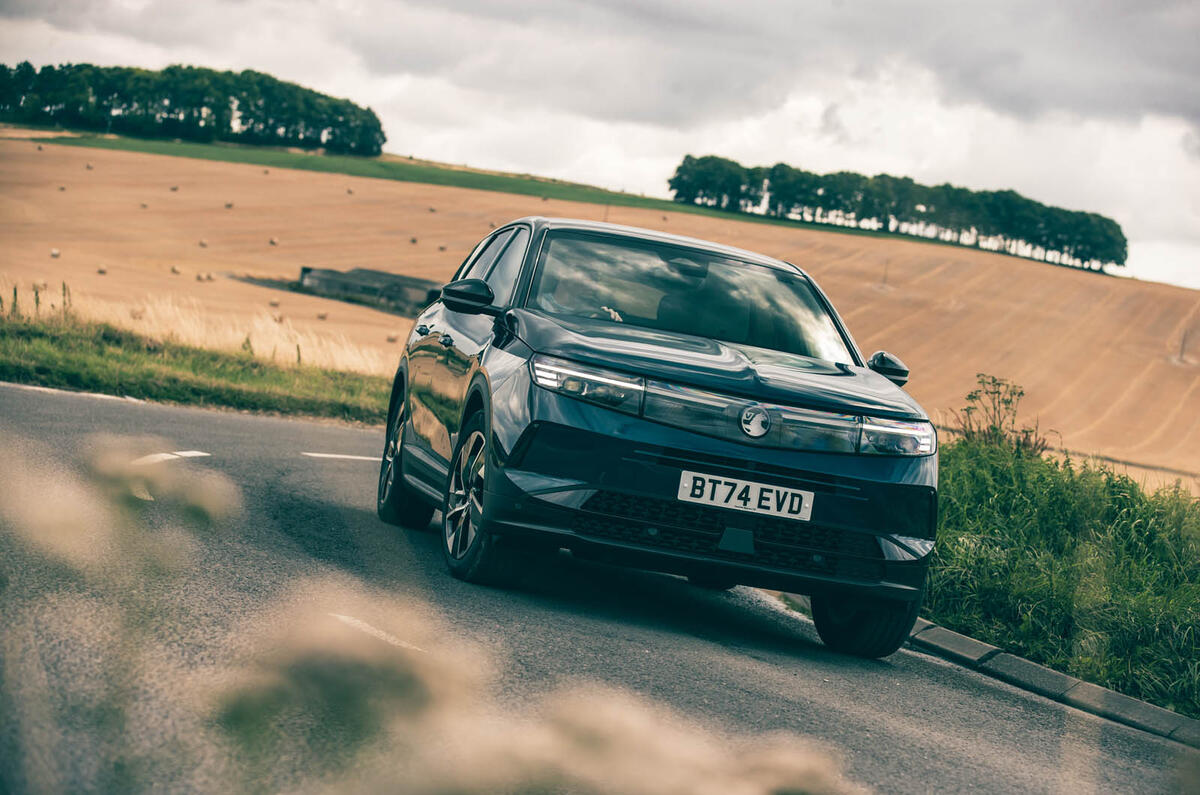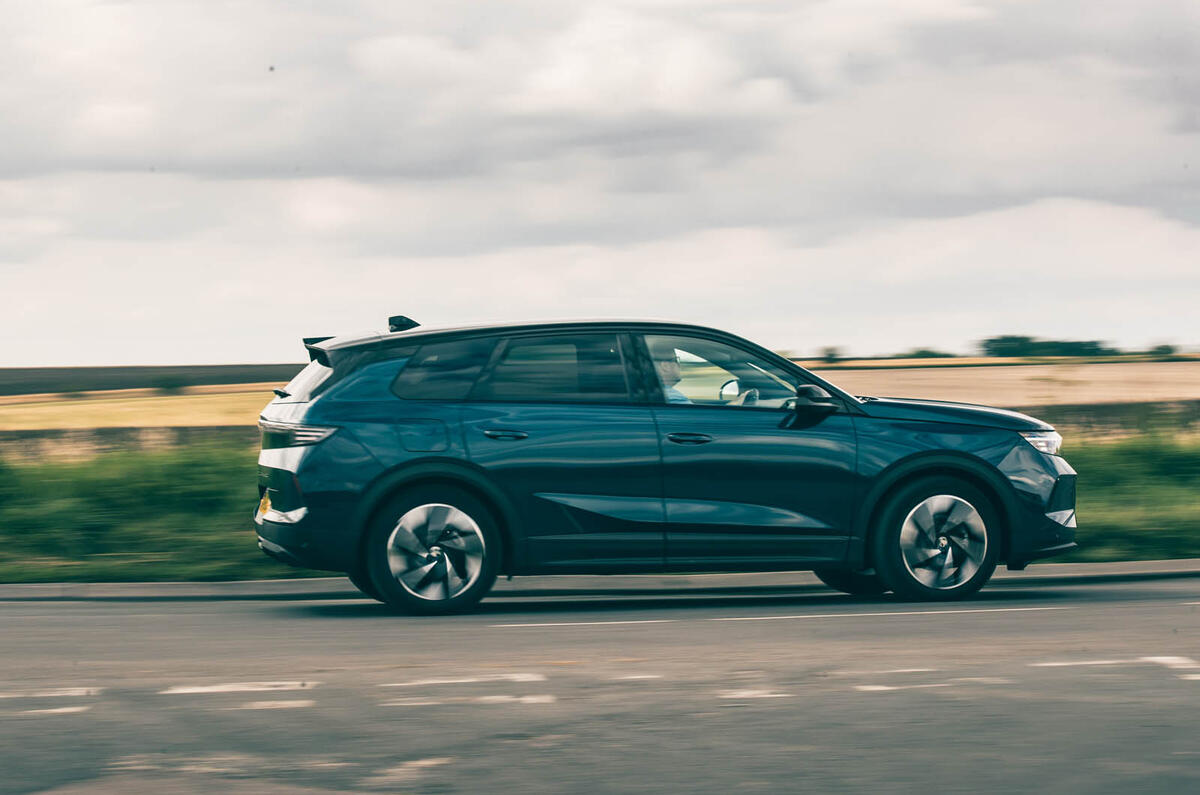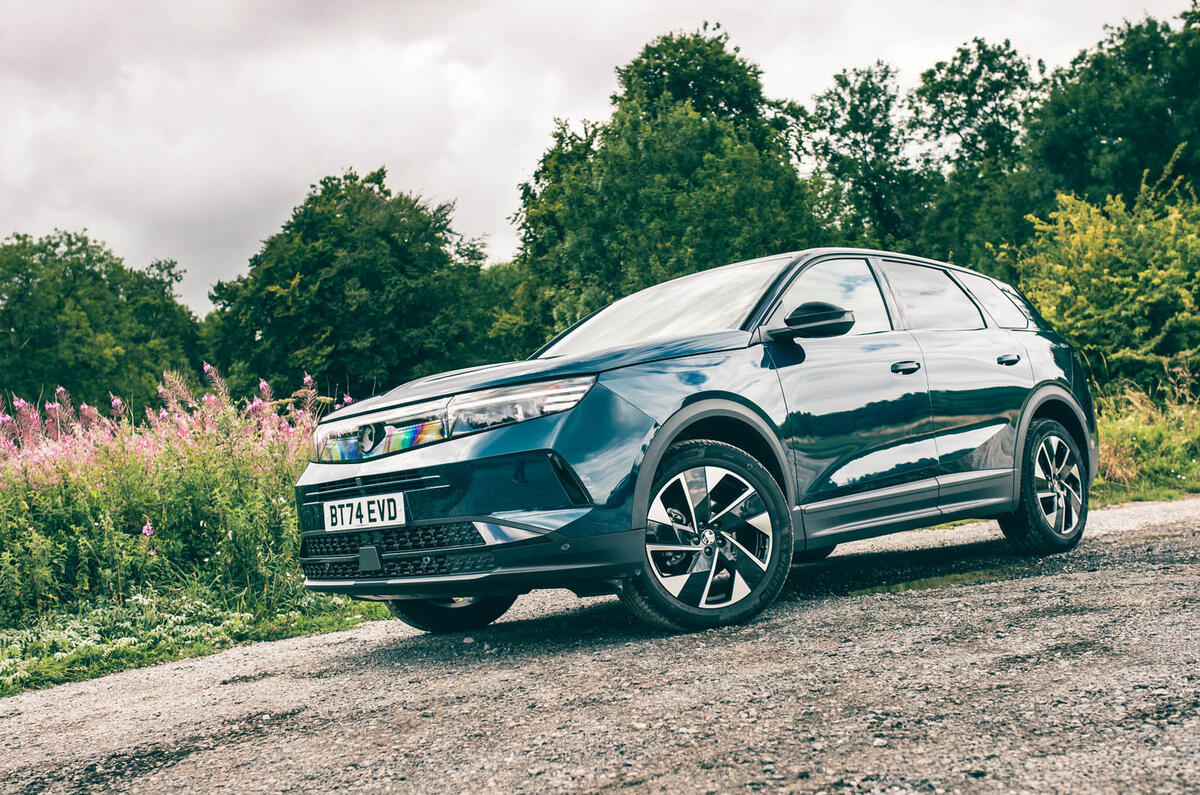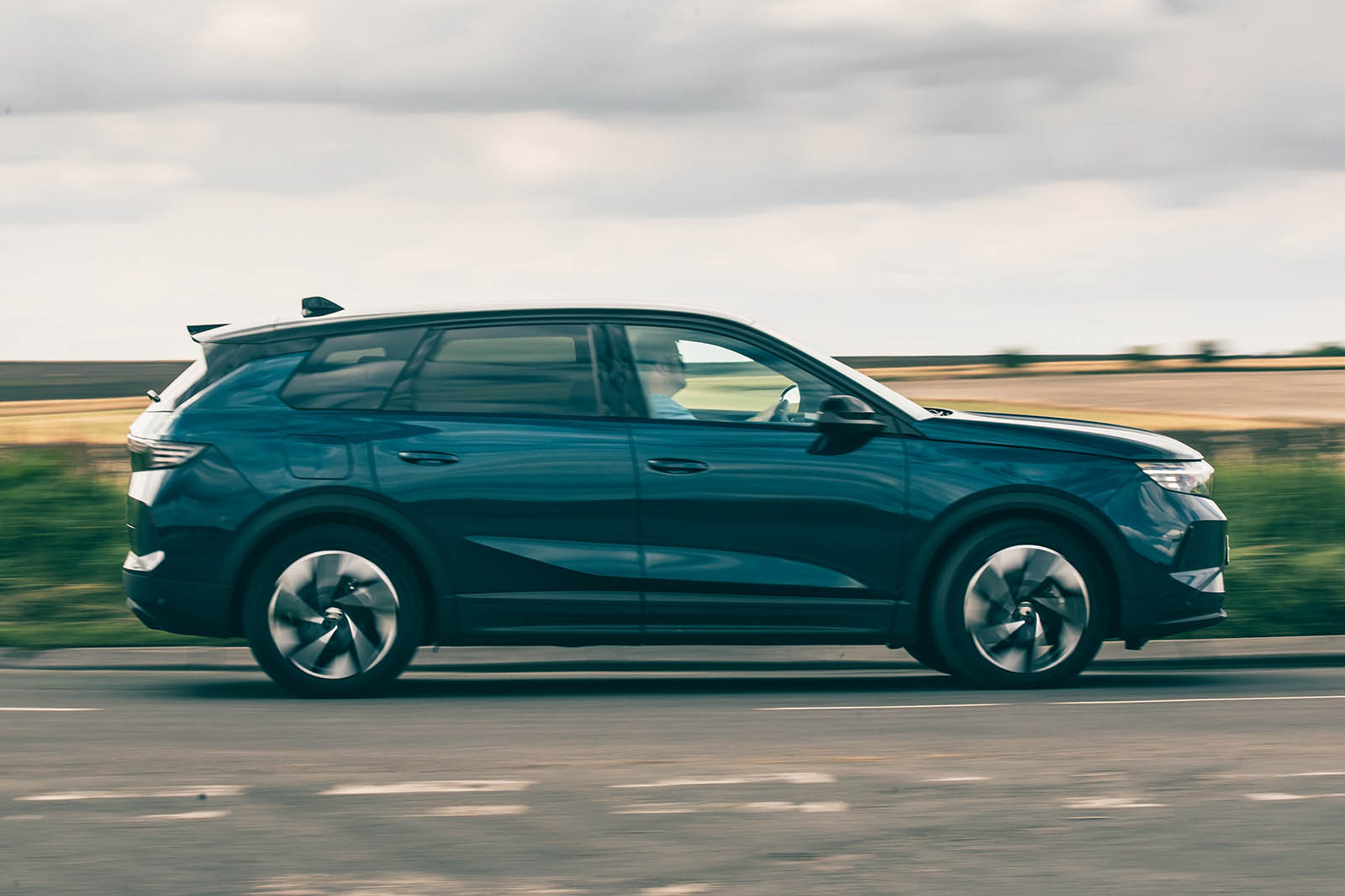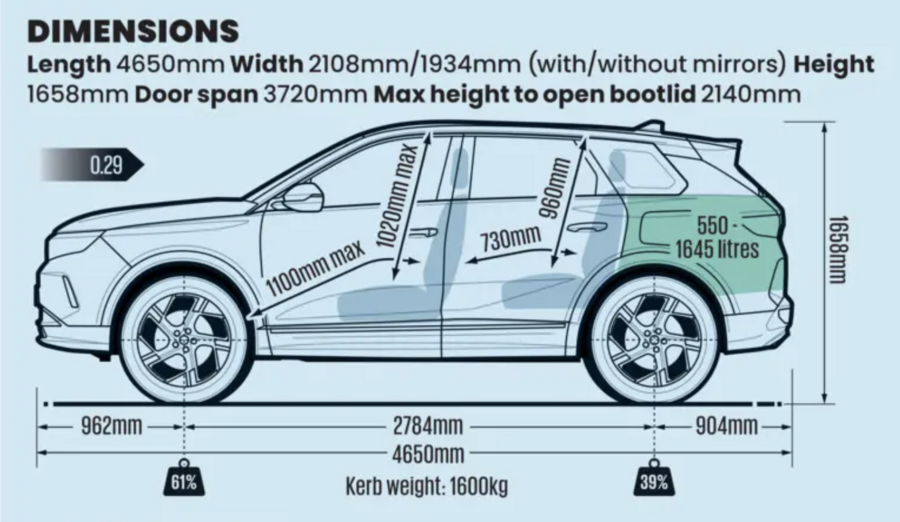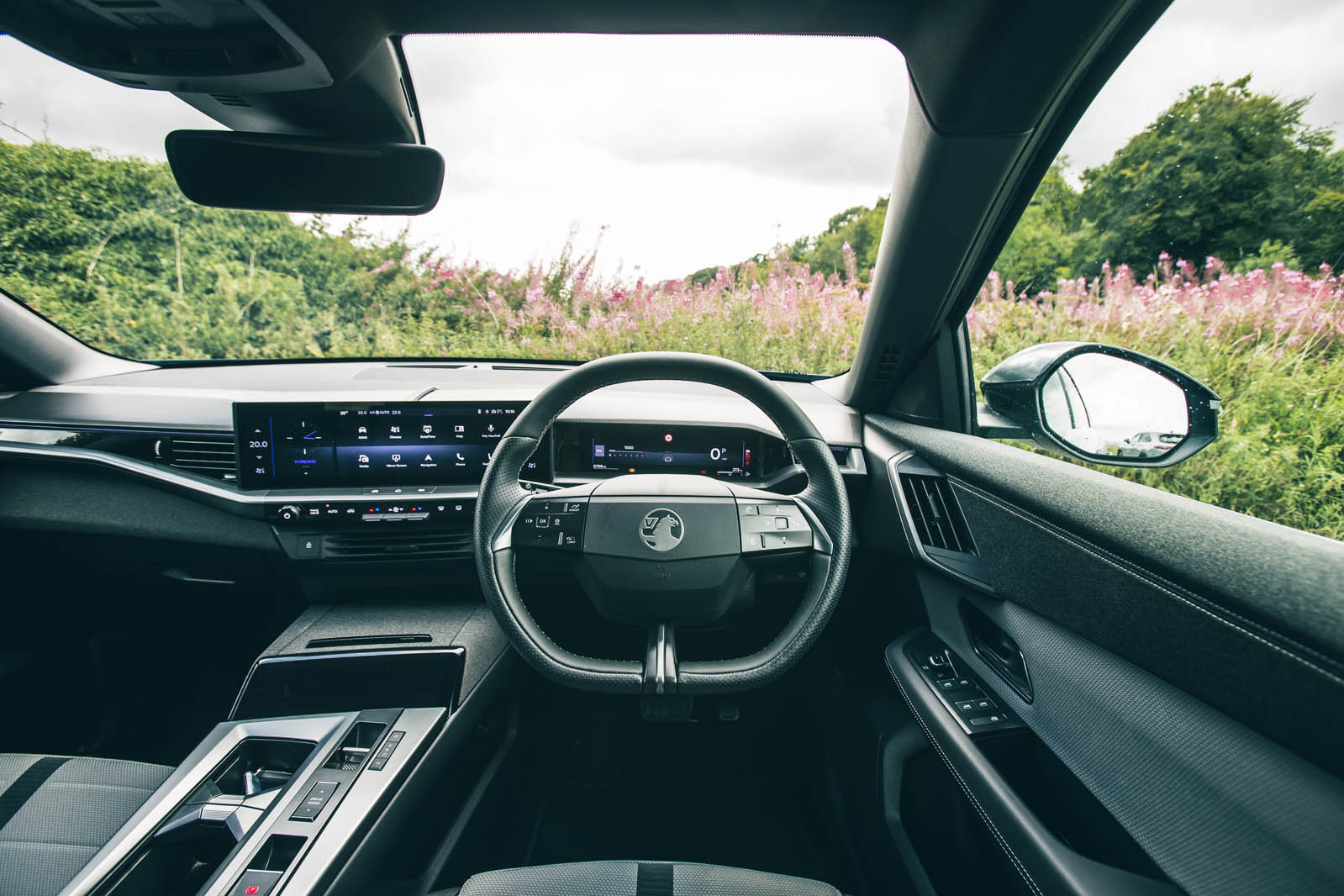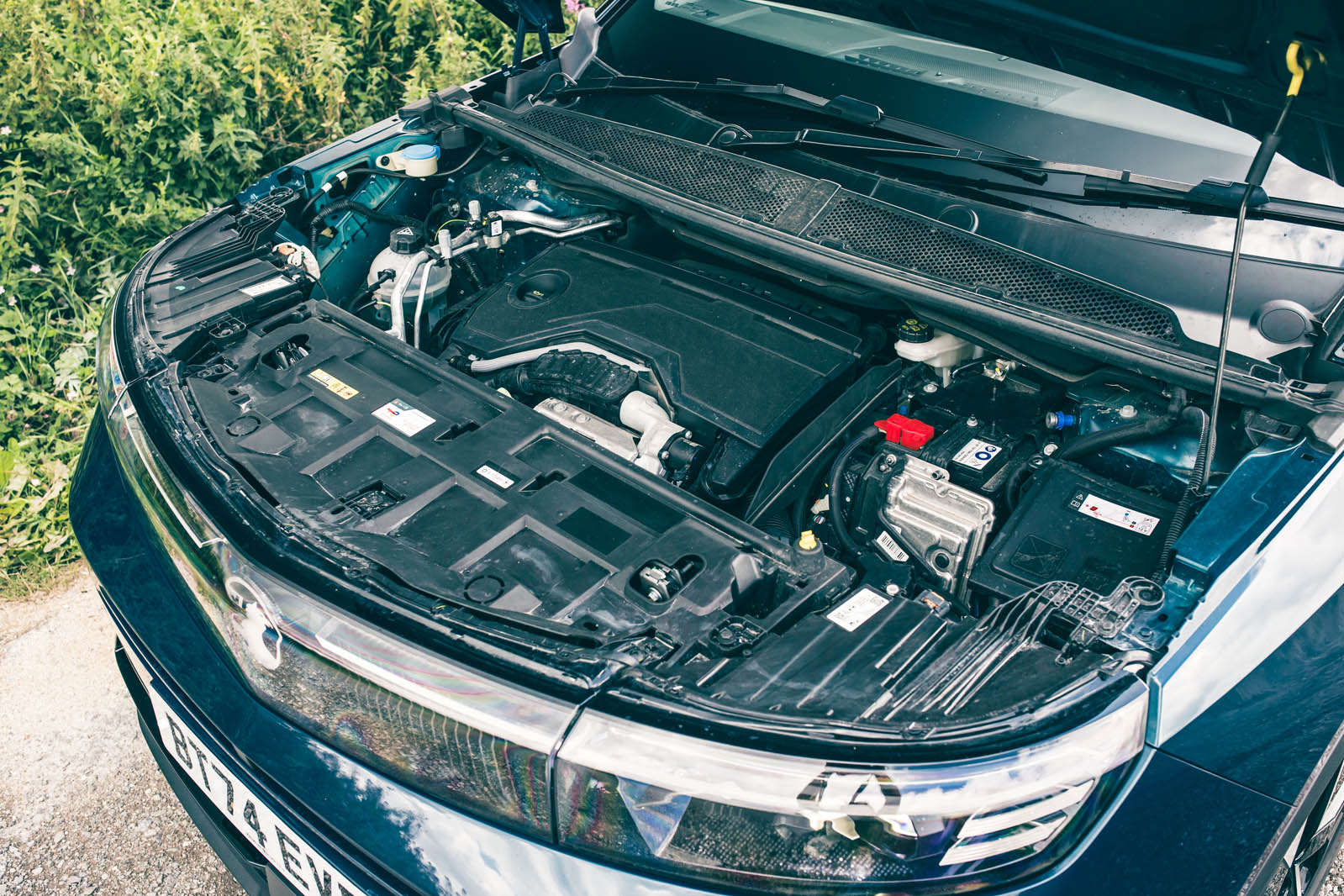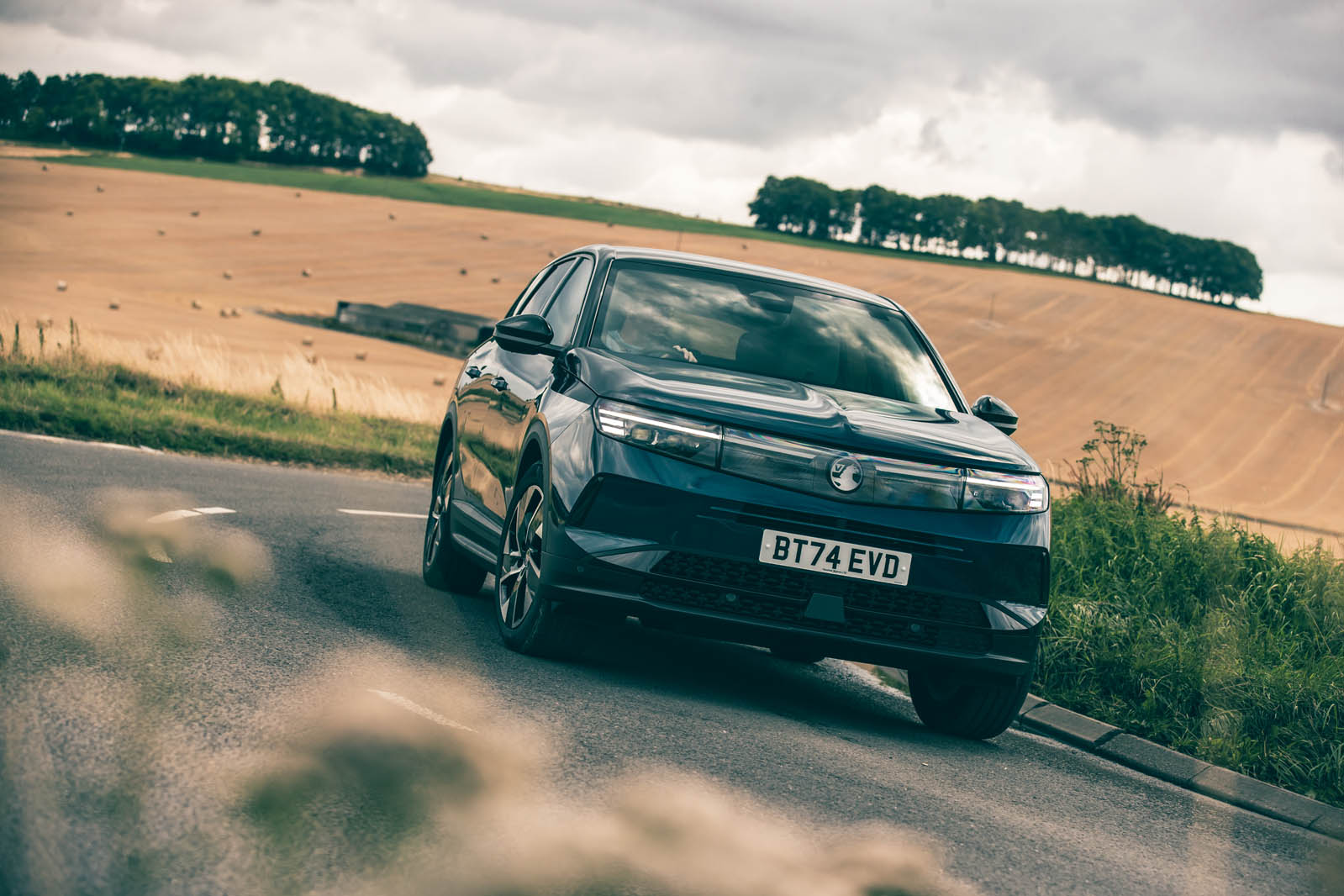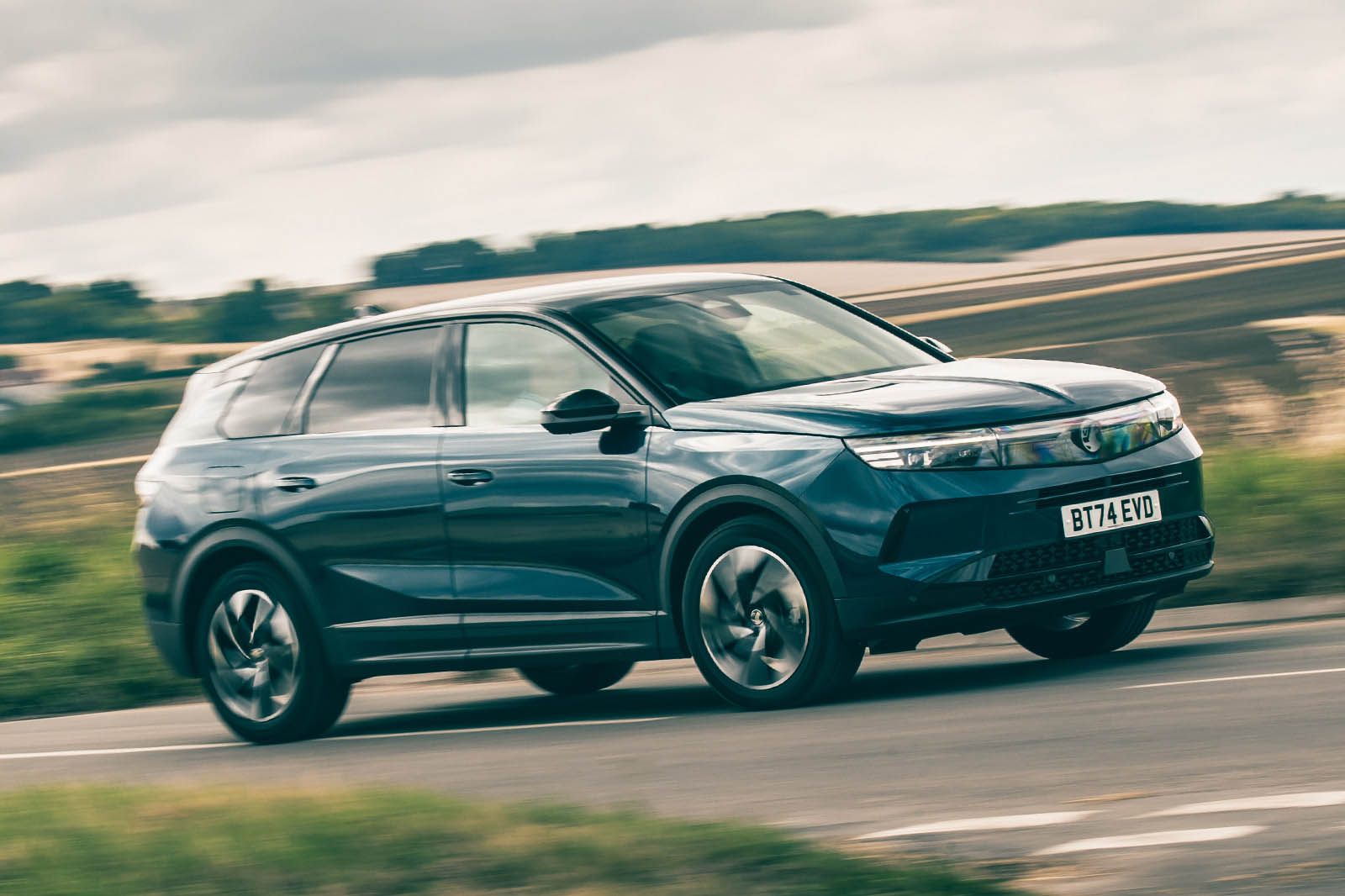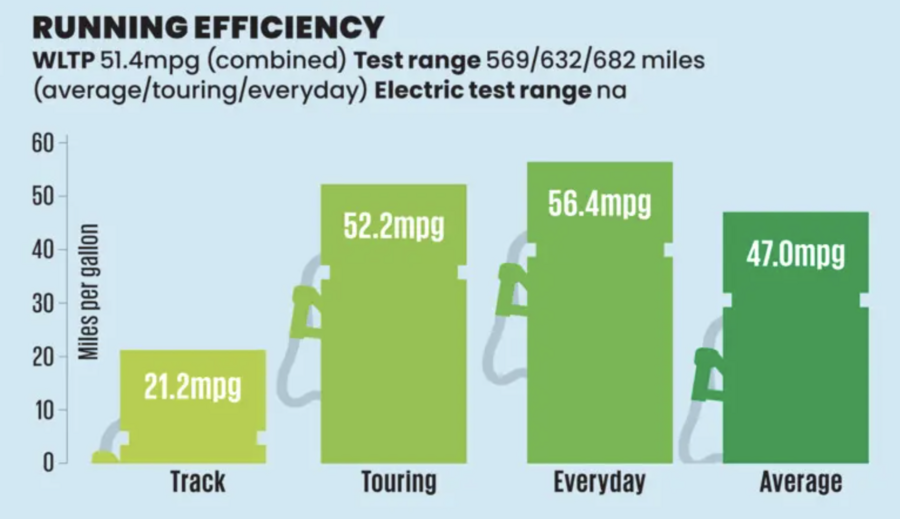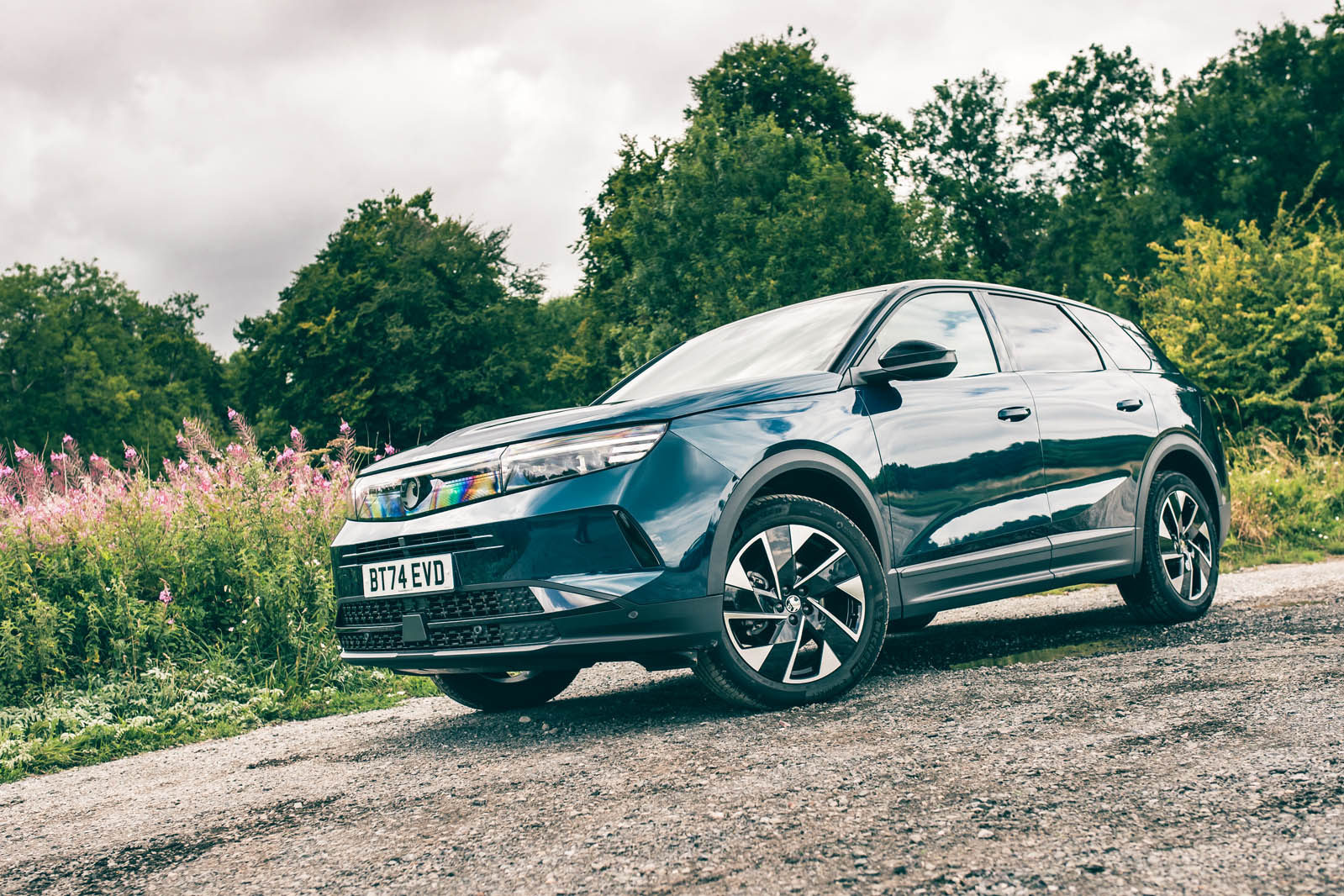The trusty ‘more car for your money’ philosophy has done well for Vauxhall over the decades. It’s needed a bit of dusting off here - but it nonetheless becomes the new Grandland’s core strength.
The car’s 550-litre boot is 10- to 20 per cent larger than the ‘C-SUV’ class norm. A false floor can be used to create a discrete underfloor storage area, or removed. And, with it out, there’s more than 950mm of both loading length and -height with the back seats in place (Peugeot e-3008 890-, 770mm; BMW X1 865-, 715mm).
The Grandland’s second-row seats aren’t the kind to slide and fold cleverly, but they certainly do provide a generous amount of passenger space, even for taller adult passengers. There are sensibly-sized door storage areas and armrest cupholders in the back too, with device charging points and storage pockets also present and correct.
Up front, you notice less attempt at decorative frippery than we’ve seen in this car’s various platform relations. Our mid-spec GS test car was upholstered in a monotone palette of greys and blacks, and in smart but workaday cloth textiles.
The centre console goes big on practical storage, between a lower tier for bags and purses; a big, air-conditioned armrest cubby; two cleverly adjustable cupholders; and a lidded device drawer with wireless charging pad.
At the wheel, visibility is good to all directions, and the car’s AGR-certified front seats offer a wide array of part-electric adjustments, and great long-distance comfort. The car’s ‘button count’ of secondary controls is a little low, but simple physical blower controls and an audio volume knob are included; and so usability of key secondary systems, and clarity of instrumentation, is decent.
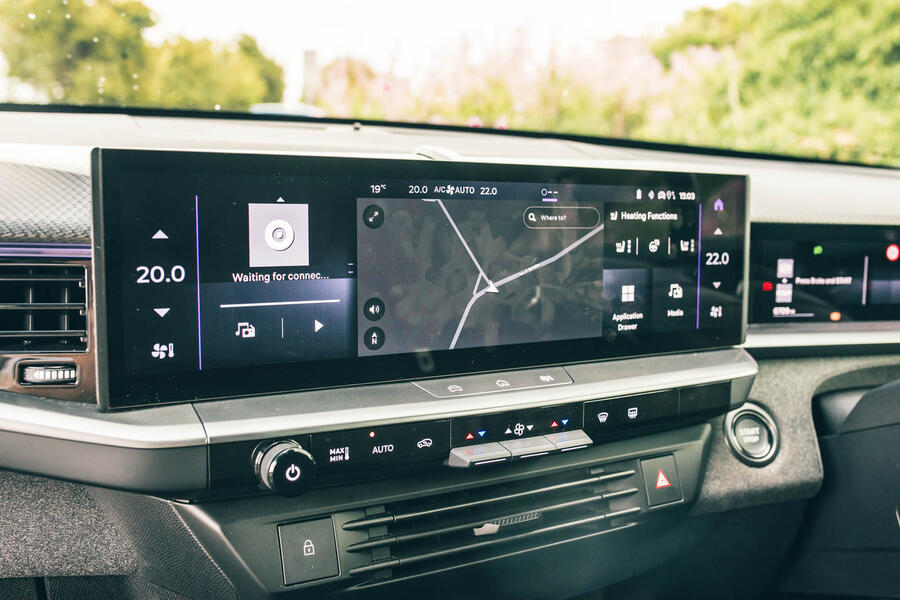
Multimedia - 3 stars
Vauxhall includes a 10in central infotainment system on the entry-level Grandland that doesn’t have factory navigation, but does offer wireless smartphone mirroring.
On our mid spec test car, the system is upgraded to 16in, and includes connected navigation by TomTom; though it’s not the most dependable or configurable system. It denies you a conventional, properly scalable ‘north up’ mapping mode that follows your route; it isn’t the best for voice programming; and most testers preferred to use Google Maps via their smartphones.
The system doesn’t give you access to ADAS functions as directly as it might, either, and so deactivating them is a bit of a fumble. Usability across the board is acceptable, rather than good.
The screen also tends to get unpleasantly hot to the touch on longer drives, which those who like to anchor an arm on the upper edge of the screen before tapping away below will certainly notice.
